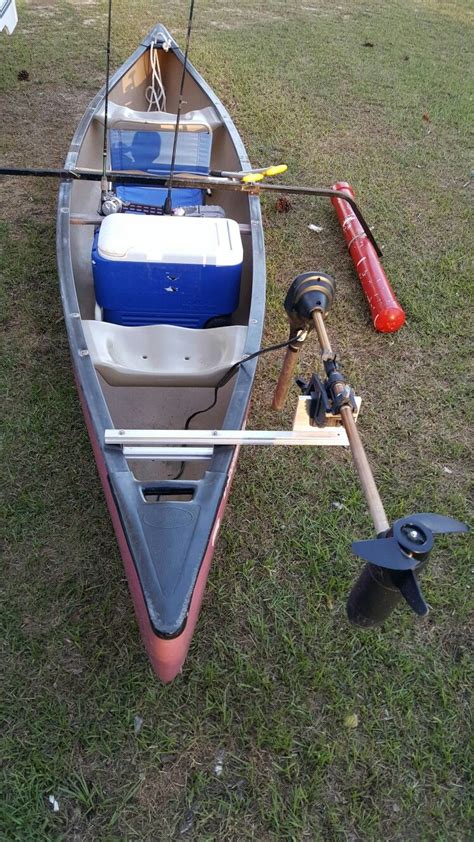Trolling Motor Mounting: A Guide for Canoes
Canoes offer a peaceful and efficient way to explore waterways, but adding a trolling motor significantly enhances their versatility. Whether you need assistance navigating challenging currents, exploring secluded fishing spots, or simply want a little extra power for longer trips, a trolling motor can transform your canoeing experience. However, properly mounting the motor is crucial for both performance and the longevity of your canoe. This guide will walk you through the process, addressing common questions and concerns.
Choosing the Right Trolling Motor for Your Canoe
Before we delve into mounting, it's essential to select the appropriate trolling motor. Consider these factors:
- Canoe size and weight: A larger, heavier canoe will require a more powerful motor.
- Intended use: Fishing trips require different power and features than leisurely paddling.
- Shaft length: The shaft must be long enough to reach the water even when the motor is mounted on the transom. Too short and the propeller won't submerge, leading to inefficient operation.
- Thrust: Measured in pounds, this indicates the motor's pulling power. Higher thrust is needed for heavier canoes or challenging conditions.
- Battery type and capacity: Deep-cycle batteries are essential for trolling motors. The battery's capacity directly impacts runtime.
A properly chosen motor ensures optimal performance and prevents overloading your canoe.
How to Mount a Trolling Motor on a Canoe: Different Mounting Methods
There are several ways to mount a trolling motor on a canoe, each with its own advantages and disadvantages:
1. Transom Mount:
This is the most common method, suitable for canoes with a flat, sturdy transom. Most trolling motors come with a mounting bracket specifically designed for transom mounting. Securely attaching the bracket to the transom using appropriate hardware is crucial. Ensure the bracket is level to prevent uneven thrust and potential damage to your canoe.
2. Bow Mount:
Bow mounting offers better maneuverability, especially in tight spaces. It's ideal for navigating shallow waters or heavily vegetated areas. However, it requires a specialized bow-mount trolling motor and may necessitate modifications to your canoe's bow. This is less common for canoes compared to kayaks and other small watercraft.
3. Temporary Mounting:
For occasional use or if you prefer not to permanently alter your canoe, consider a temporary mounting system. These typically use clamps or suction cups to attach the motor to the transom or gunwales. While convenient, ensure the system is robust enough to handle the motor's weight and thrust, especially during periods of rough water.
What are the Best Trolling Motor Mounts for Canoes?
The “best” mount depends heavily on your canoe and its usage. There isn't one universally superior option. However, consider these factors when choosing a mount:
- Material: Durable, corrosion-resistant materials such as aluminum or stainless steel are preferable.
- Adjustability: A mount that allows for easy adjustment of the motor's angle is beneficial for optimal performance.
- Security: Robust locking mechanisms are essential to prevent the motor from coming loose during use.
What are some common mistakes to avoid when mounting a trolling motor on a canoe?
- Improperly sizing the motor: Overpowering or underpowering the motor can lead to issues.
- Using incorrect hardware: The mounting hardware must be strong enough to withstand the forces exerted by the motor.
- Not securing the motor properly: A loose motor can damage your canoe and pose a safety risk.
- Ignoring weight distribution: A poorly positioned motor can affect your canoe's stability and handling.
How do I maintain my trolling motor mount?
Regular maintenance ensures your trolling motor mount remains secure and functional:
- Inspect regularly: Check for loose screws, bolts, or cracks in the mount.
- Clean after each use: Remove any debris or saltwater buildup.
- Lubricate moving parts: Apply lubricant to hinges and other moving parts to prevent corrosion and ensure smooth operation.
By carefully following these guidelines and choosing the right equipment, you can enjoy the added convenience and versatility of a trolling motor on your canoe for years to come. Remember to prioritize safety and proper installation to ensure a positive and enjoyable experience.

